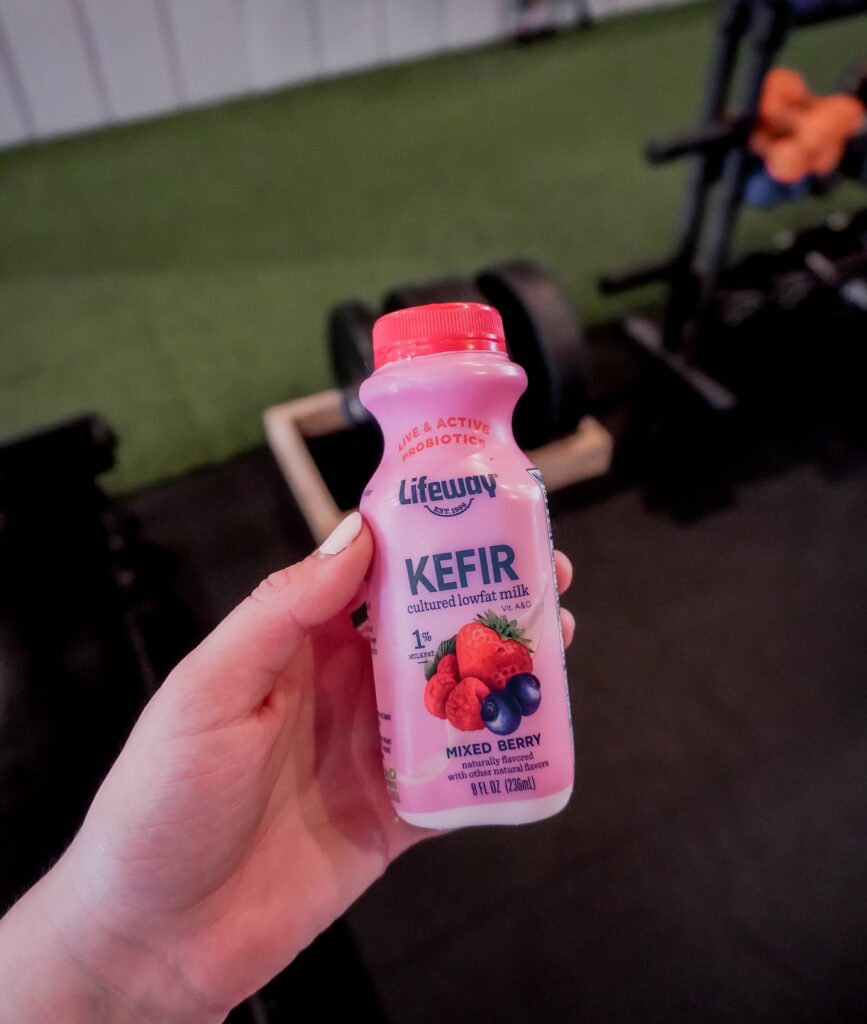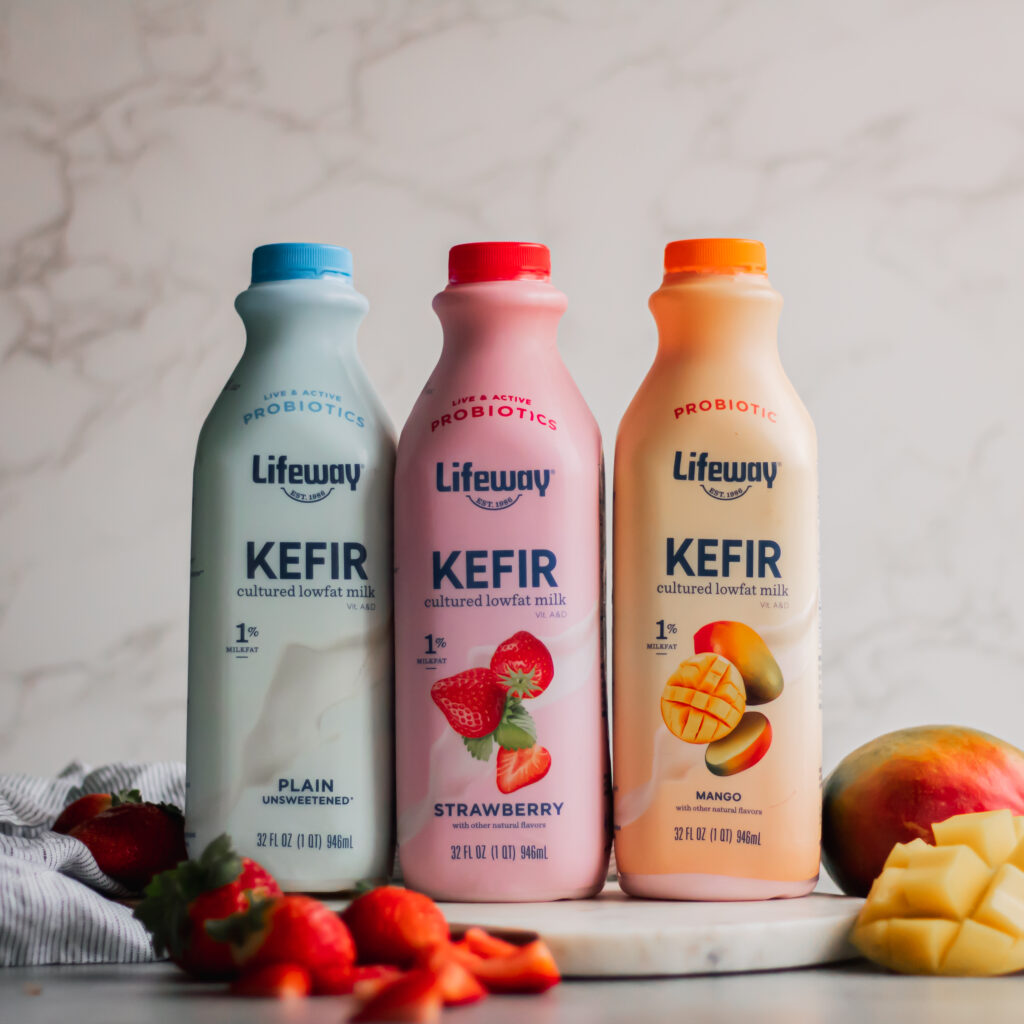Women’s health is a vast and dynamic area of research with multiple factors influencing women of all ages, at all times of their life cycle. With changing hormone levels in every decade, new health challenges arise and opportunities of growth and education for women come to the forefront. This is especially true for longevity since two of the most influential, positive things a woman can do for their health and quality of life are related to nutrition and movement.

The Importance of Protein and Strength Training for Bones and Muscle
Obtaining adequate levels of protein and participating in resistance training (strength training) not only support women’s hormones during later stages of life, but it also helps circumvent and protect women from bone loss and muscle mass loss when hormones shift at various stages all throughout their lifespan.
Sufficient protein intake combined with strength training has been shown to help prevent or slow osteopenia (the early stages of the loss of bone density), osteoporosis (progressed stages of bone loss), and sarcopenia, (the gradual loss of muscle mass and function). Combined, these are known as osteosarcopenia, and when this occurs, it can be challenging to return to optimal levels, if at all.
Active prevention is key, and that’s why it’s important for women of all ages to be mindful of their nutrition and movement to counteract the negative impacts of not strength training or prioritizing protein intake. Even in the late stages of life, there are still benefits to eating adequate levels of protein and participating in strength training as hormones shift.

Exercise helps support metabolic reactions that protect women from muscle mass loss on a regular basis that naturally occurs with age and changing estrogen levels throughout a woman’s lifespan. Many women do not realize estrogen is neuroprotective, osteoprotective, and even anabolic, therefore, when levels decline, it’s vital to make lifestyle choices to combat the effects.
Sufficient protein helps fuel better exercise sessions while also helping to stabilize hormones, blood sugar, prevent muscle mass loss, and help women gain (or retain) lean body mass when combined with exercise. All of this combined optimizes a woman’s health and how she ages and feels on a daily basis.
How Much Protein is Enough?
Obtaining quality levels of protein is one of the most important factors to consider before deciding how much to consume, and studies show animal sources of protein do seem to have a benefit to them because they’re complete sources of bioavailable protein. This means it’s easier for your body to absorb what you eat and get the most of the amino acids found in these sources of protein. However, that does not mean you have to only eat animal sources or eat high amounts of it to get the benefits. Simply including some animal sources with plant sources of protein seems to offer an excellent balance of protein intake, if you choose to go that route.
Quality Sources of Protein Include:
- Lean meats, poultry, and fish/seafood
- Eggs and egg whites
- Cultured High-Protein Dairy Foods like Lifeway Kefir and Farmer Cheese
- Other Types of Dairy: Milk, Greek yogurt, cheese
- Beans and Lentils (including whole soy products like soy milk, tofu, and edamame)
- Seeds (and grain-like seeds) such as chia seeds, hemp seeds, pumpkin seeds, sunflower seeds, quinoa, and amaranth
- Select Nut butters (5 grams and above): almond butter and peanut butter are two good choices
- High-Quality Protein Powders: Whey protein, milk protein isolate (whey/casein blend), hemp protein, and pea/rice combinations if plant-based, are solid choices that are complete proteins.

How to Eat Enough Each Day:
Make it a goal to include protein each day with all your meals and snacks to start if you’re not eating enough each day or struggle to. Most adults require 0.36 per pound to prevent a deficiency, but that doesn’t mean that number is optimal for everyone. Newer studies show higher amounts of protein optimize various health markers, and the target amount of protein in grams per day can go up 0.6 grams to 1.2 grams per pound of body weight depending on age, sex, activity level, diet needs and health. You can always adjust it depending on how your body responds and how active you are. You can find a calculator here to see the minimum you need that the USDA recommends.
Note: The lower end of these recommendations are to prevent a deficiency— not necessarily what is optimal for you and your lifestyle. Recent studies show higher levels of protein may be more beneficial if you’re looking to add muscle to your frame, are very active, are looking to protect lean body mass, protect bone density, or are on a high-protein diet for other health reasons.
For example, eating more protein is especially helpful for women looking to maintain muscle mass during hormonal shifts in life or on popular weight loss plans since protein intake often goes down in these cases, whether that’s due to a lack of hunger or a reduction in overall caloric intake. It can also be helpful if one is recovering from an injury, has a restricted diet due to other health issues and struggles to maintain their weight, or is looking to optimize their lean muscle tissue.
Tip: When you look at your plate, simply think to yourself, “Am I prioritizing protein in this meal (or snack)?” Be proactive about including several sources throughout the day instead of just two or three. It’s easy to get stuck in a pattern by eating the same sources, but variety can expose you to different nutrients found in varying protein choices.

How Much Exercise?
Strength training, either with weights at home or a gym, just 3 times per week with a target of 20 minutes per session is an excellent starting point. If you want to do more, great! Just be sure to give your body a couple days a week to recover which is key for helping muscle grow and heal faster to optimize your training. Post-workout recovery is also important, so make sure to eat a meal with protein and carbohydrates after a session to prevent muscle breakdown and encourage muscle protein synthesis and recovery.
It’s also important to participate in bone-supporting movements like regular walking or even yoga (if you enjoy it) on a regular basis. Just note that neither walking, yoga, or pilates count as alternatives to strength training because they do not put the same amount of tension or stimulus to muscles that weight-bearing exercise with weights does.
Progressive overload (gradually increasing the amount of weights over time) is one way to get the most benefits for building lean muscle mass that is doable and attainable for anyone. It can also help stimulate osteogenesis, the creation of new bone cells at any stage of life.

Take Home Notes:
Remember, protein and strength training don’t have to take over your life or be complicated. Breaking it up into small doable chunks throughout your day (and week) can make it seem easier. Making a meal plan out and putting exercise in your schedule/calendar are two easy things to help keep yourself accountable if you’re not yet used to doing either of them yet.
Check out all our free recipes that are filled with protein and probiotics found in our selection of premium cultured foods. Both Lifeway Farmer Cheese and Lifeway Kefir are excellent sources of protein to fuel all your exercise days to come.

How Lifeway Kefir Can Help Women Live Healthier
Lifeway Kefir is also an excellent source of calcium and vitamin D, two critical nutrients that support bone health and prevent bone loss. Kefir is also one of the best foods to eat since the live and active probiotic cultures support digestion and absorption of protein for women and men of all ages.
Here are some of our most popular high-protein recipes for easy ways to enjoy them today!
- 10 High-Protein Recipes to Nourish Your Gut
- 7 High-Protein Breakfasts for Better Gut Health
- High-Protein Probiotic Snacks to Fuel Your Day
- How to Eat Fermented Foods Every Day (These are packed with protein!)
- Find Your New Favorite Gut-Healthy Protein-Rich Recipes Here.